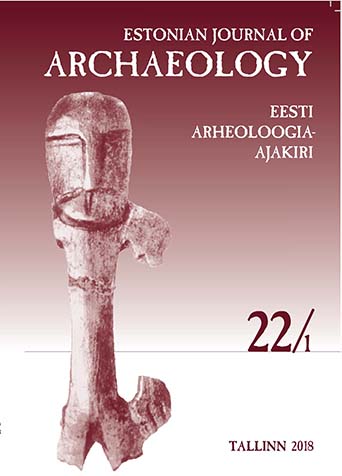KOHTLA-VANAKÜLA WEAPONS AND TOOLS DEPOSIT: AN IRON AGE SACRIFICIAL SITE
IN NORTH-EAST ESTONIA
KOHTLA-VANAKÜLA WEAPONS AND TOOLS DEPOSIT: AN IRON AGE SACRIFICIAL SITE
IN NORTH-EAST ESTONIA
Author(s): Ester Oras, Aivar Kriiska, Andres Kimber, Kristiina Paavel, Taisi JuusSubject(s): Archaeology
Published by: Teaduste Akadeemia Kirjastus
Summary/Abstract: Kohtla sacrificial site is a unique deposit of Iron Age weapons and tools concealed in watery context, located in north-eastern Estonia. It was discovered by a metal detectorist in 2013 and thoroughly studied by archaeologists in 2013 and 2014. The two fieldwork seasons resulted in a collection of artefacts and their fragments from the total of at least 400 initial objects. As a result, the Kohtla find is the largest of its kind in Estonia and second largest in the eastern Baltic. AMS dates from the charcoal pieces relating to different layers of the deposit, wooden remains from the sockets of the weapons as well as artefact typochronology indicate that the formation of the deposit was a result of the long-term use of the site from around the turn of common era up to the Pre-Viking Age (550–800 AD), whilst the vast majority of objects seem to belong to the Roman Iron Age (50–450 AD). Here we present the detailed overview of this extraordinary archaeological discovery, describe its context and content, and set it into the broader picture of similar finds both in Estonia and in the wider circum-Baltic context.
Journal: Eesti Arheoloogia Ajakiri
- Issue Year: 22/2018
- Issue No: 1
- Page Range: 5-31
- Page Count: 27
- Language: English

